If you are a traditional Mainstream or Prince Hall Mason, hereafter referred to as a Malecraft Mason, then you probably have the perception that a woman in Masonry is a member of the Eastern Star or Heroines of Jericho. You would be wrong.
Co-Masonry, as Kidd tells us, started with the making a Mason of Maria Deraismes, a well known advocate of women’s rights, in France by a Malecraft Lodge in 1882.
Deraismes, along with Georges Martin, founded Le Droit Humain later called International Co-Freemasonry.
From this modest beginning by 1900 sprang the Supreme Council of Universal Co-Freemasonry, incorporating the 33 degrees of the Ancient and Accepted Scottish Rite. This body claimed for itself worldwide jurisdiction of Co-Masonry and chartered new Lodges in many different areas. One of those areas was Britain where Annie Besant organized Co-Masonry.
And if you thought that a woman in Masonry would be an isolated case you would be wrong again. And if you thought that a woman in Masonry was a recent development and a passing fad, you would still be wrong one more time.
Karen Kidd, in her first book Haunted Chambers, catalogs the lives and occurrences of the first women who were admitted to Male-craft Masonry or who sneaked in. Now in her second book, On Holy Ground: A History of The Honorable Order of American Co-Masonry
, Kidd publishes a detailed history of Co- Masonry, the institution that is the Obedience that admits men and women of all religions and national origins.Co-Masonry started in the 1880s. The belief that Co-Masonry sprung up on its own, independently from Malecraft Masonry and developed its own theory on Masonry all by itself is another perception to be shattered. Kidd quotes Annie Besant, founder of Co-Masonry in Great Britain and India.“ Co-Masonry has arisen from the bosom of Masculine Masonry in order to bring women into that ancient fraternity on exactly the same terms as men, and thus to restore the whole Brotherhood to the position from which it fell; when it broke its link with the Ancient Mysteries by excluding women from its ranks, by recognizing distinction of sexes within the pure sanctuary of the Temple.” Maria Deraismes
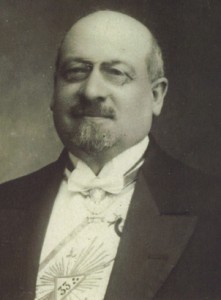
In 1903 Antoine Muzzarrelli a French born Mason of Italian descent and an educator, lecturer, author and private tutor convinced Georges Martin in France into letting him found North American Co-Masonry on behalf of LDH. Muzzarrelli had become a protector of French Masons in the United States working with the Grand Orient of France. But issues with the GOdF led him to seek another avenue for his Masonic expression and one where he could be the big cheese. Muzzarrelli tapped the anarchist turned Socialist Louis Goaziou, a newspaper publisher in Charleroi, Pennsylvania as his chief deputy and Master of the first North American Co-Masonic Lodge in America, Alpha Lodge #301 formed by The American Federation of Human Rights the name Muzzarrelli chose for this new American Obedience. Alpha Lodge #301 was formerly consecrated with 21 Brethren, of which three were women, on October 18 and 19, 1903 in Charleroi.
In the next five years The American Federation of Human Rights would grow to over 40 Lodges. But Muzzarrelli’s tenure was short lived and towards the end he was beset with financial difficulties and irregularities, litigation and clamor for a National Convention. In 1908 Muzzarrelli was dead by his own hand and the Order was in chaos.
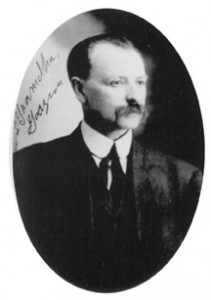
Goaziou reluctantly took over and served as head of the Order from 1908-1937, almost 30 years. His first duty was to get the finances in order. Then he permitted that National Convention in 1908 and presided over it. On May 26, 1909 he reincorporated The American Federation of Human Rights with some needed updates to the original. On January 20, 1910 the Supreme Council of the International Order issued a Charter to The American Federation of Human Rights.
Goaziou presided over the second National Convention in 1913. His most noted achievement was probably the purchase of land in Larkspur, Colorado and establishing the National Headquarters there.
But all was not roses for Goaziou.
Like Muzzarrelli, he had a skirmish with traditional Male-craft Masonry, and the Great Depression hurt the Order badly. Bank closings and the freezing of Federation money made for a very lean bare bones version of Masonry. Not only was their little expansion but some Lodges had to close because of financial difficulties.

But the one difficulty that sent this writer to the research books was the beginning of a long altercation between Theosophist and non-Theosophist Brothers for control of the Order. French Co-Masonry was decidedly secular while English Co-Masonry was decidedly Theosophist in nature. American Co-Masonry started out impartial and very much in the French mode but later developed to resemble more English Co-Masonry.


This factional dispute bled over into Goaaziou’s successor, Edith Armour who was the Order’s first female leader and first Theosophist leader. Although Goasiou had brought many fellow Socialists into Co-Masonry he prided himself on guiding the American Federation of Human rights along a middle path not dominated by any single philosophical, religious or political group. Armour tried vainly to do the same but her Theosophical commitment had the Order leaning to favoritism even if it wasn’t deliberate. This led to a challenge to her leadership by Helen Sturgis who Goaziou had to deal with earlier. Armour survived victorious but her reign saw a marked decline in membership. Yet, to be fair, one must factor in the effect that WWII had on the Order.
Kidd sums up the Theosophist battle thusly:
“To be sure, the Theosphical society is still active and supportive of Co-Freemasonry even today. It simply does not have now, nor had it ever, the ability to fully populate what is intended to be an inclusive, diverse, independent and free thinking body. No single religion, philosophy, creed, or political persuasion can possibly do that for Freemasonry. By necessity, Freemasonry must be mixed.”
“As Armour herself observed in 1936, differences in interpretation ‘are stimulating and refreshing.’ The lack of these differences caused the Order to become sluggish and stagnant. This is not what Armour ever intended but by the time she realized what was happening, she was too worn and tired to struggle against it, let alone undo it.”
Armour served as the leader of the American Federation for over twenty years from 1937-1959 and she was the first Most Puissant Grand commander to step down rather than die in office.
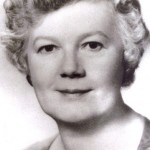
The docile Bertha Williams followed in 1959 and her weakness finally resulted in her quitting in 1967.
Helen Wycherley followed and she immediately put some backbone back into the office, Kidd tells us:
“She soon made it very clear the Federation would be beholden to no single religious, political or philosophical body. Herself a Theosophist, Wycherley ended American Federation’s time in the Theosophical shadow.”
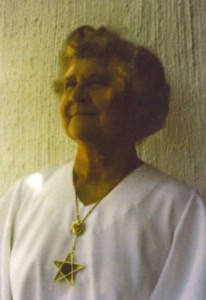
Wycherley selected Calla Hack as her successor in 1983. The move proved to be a disaster, so much so that Wycherley would come back to campaign against her in a bold attempt to remove her. Hack lost $70,000 of the Federation’s money investing in the stock market totally on her own. She embarked on a campaign to remove a most popular Grand Orator. She was not a Theosophist and had close ties with Paris, so much so that The Federation became divided between the “Loyalists” whose first allegiance was to The International Order and the “Secessionists” whose first loyalty was to the American Federation.
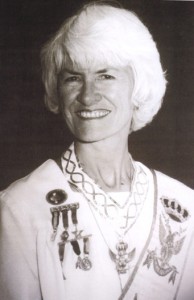
Hack resigned in 1992 and what followed would change The American Federation of Human Rights forever. This time Hack’s successor was chosen by a true election. There were three candidates, Magdalena Cumsille, Rosario Menocal and Vera Bressler. Cumsille got 70% of the vote and Bressler got 6%. Clearly the American Federation had chosen Cumsille. Now in past years all newly selected Most Puissant Grand Commanders were ratified by LDH in Paris. This always had been a rubber stamp of whatever American Co-Masonry had decided.
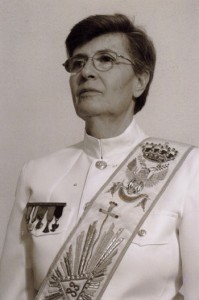
This time was different. Paris demanded that Bressler be appointed MPGC and so she was. It also remanded American by-law changes, and changes giving the MPGC more autocratic power. By Colorado law, by-law changes to a nonprofit corporation must be ratified by its membership. By a vote of 70-30 it was not and the battle was on. It took a number of years but in due time the American Federation of Human Rights divorced itself from the International Order of Co-Freemasonry, Le Droit Humain. Le Droit Humain founded a new organization in the United States, incorporating in Delaware, and calling itself the “Order of International Co-Freemasonry Le Droit Humain – American Federation.” The old American Federation renamed itself “ the Honorable Order of American Co-Masonry, the American Federation of Human Rights.” Some Lodges stayed with Le Droit Humain in their new American Order but a larger number remained with the newly separated American Federation which elected Magdalena Cumsille MPGC by an overwhelming majority and she continues in that office today.
Karen Kidd has penned a monumental work of distinction in On Holy Ground: A History of The Honorable Order of American Co-Masonry. It’s a powerful work, written with great gusto. And it is interesting reading. It’s interesting because Kidd doesn’t forget to include the human factor. People are human beings to Kidd not just robots in a jig saw puzzle to be fitted together by proper accounting.
In a number of instances Kidd has been able to correct misinformation. Because she is a member Of the American Federation of Human Rights she is privy to files and records off limits to outsiders. Thus she has been able to set the record straight on controversies and assertions that have been made in error.

Her research is meticulous and thorough. She maintains her objectivity. She has no agenda. She doesn’t fill in the blanks with a guess. This book is well documented with a ton of footnotes. At the end are a number of full length manuscripts which is a really nice addition to this work and accentuates the ideas and the struggles of this Order. There are many good pictures. Some of the images and documents have never been published before.
On Holy Ground: A History of The Honorable Order of American Co-Masonry will be a major research source carried by every library. And Karen Kidd has truly earned the title – Historian.
You can find On Holy Ground: A History of The Honorable Order of American Co-Masonry on Amazon.


As a former member of the American Federation in the 1980s and 1990s, I knew all the MPGCs from Helen Wycherley onward and I lived through the events of that time mentioned in this review. I do not fault the review or the reviewer in the slightest, and indeed accept his review as an accurate representation of what is in the book. If that is true, the author’s statements made with regard to the events from the 1980s to the early 1990s are clearly written from a highly partisan point of view.
It has been said that history is written by the victors, and the author is a member of the victorious “Secessionist” group, so her bias is evident in the calumny unjustly heaped on Calla Haack – who was an excellent MPGC and fought valiantly to try to keep the original American Federation together – and in the author’s almost heroic treatment of Helen Wycherley, which smacks more of hagiography than history.
The “Secession” was not pretty. It tore many lives, friendships, lodges, and ultimately a Federation apart, and for no necessary reason. Instead of using established Masonic procedures to instigate change within the long-existing Federation, the “Secessionists” chose to start a coup, an insurrection, and tear the Federation apart. What their motives were in doing so I leave to them and their God.